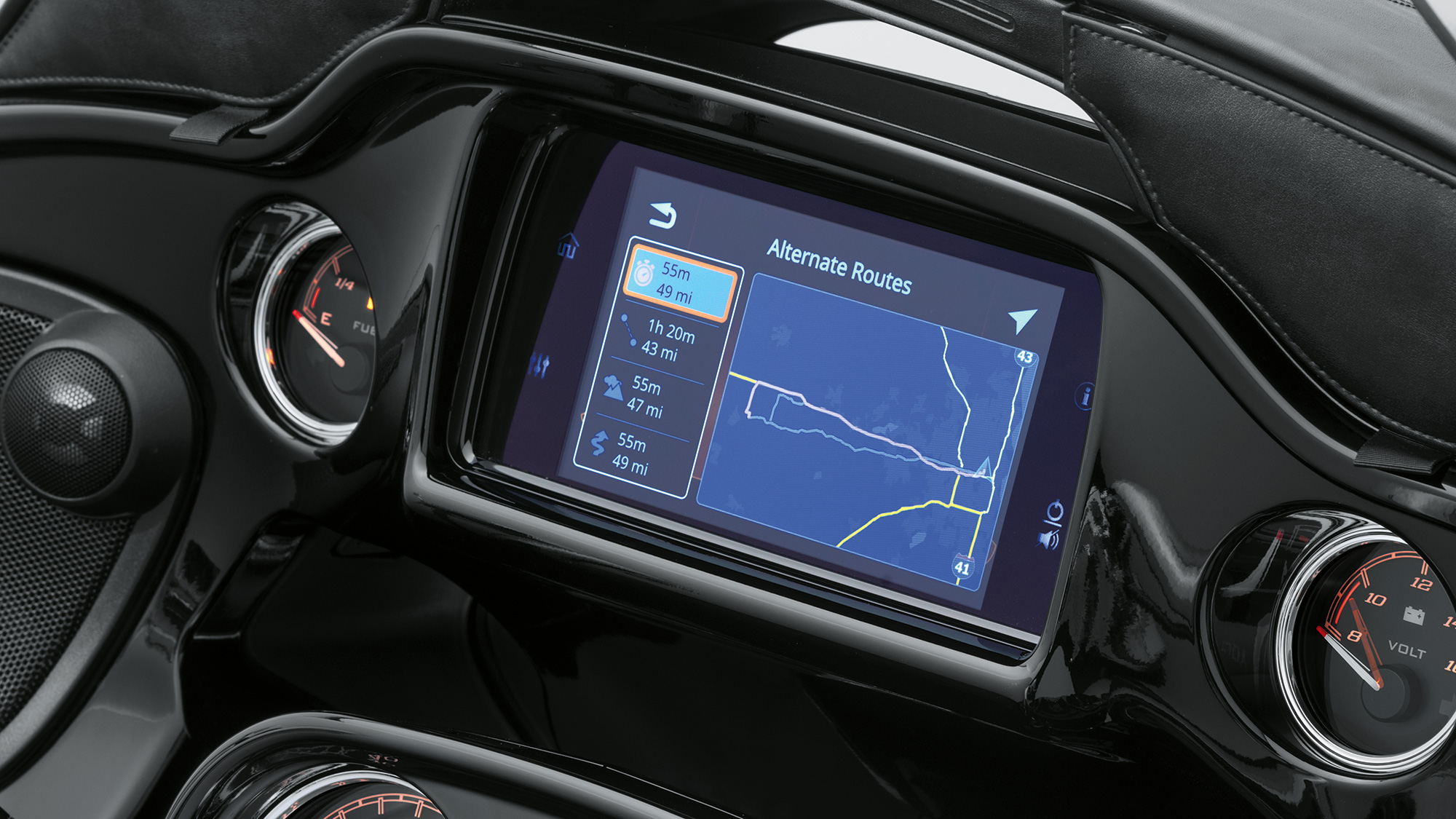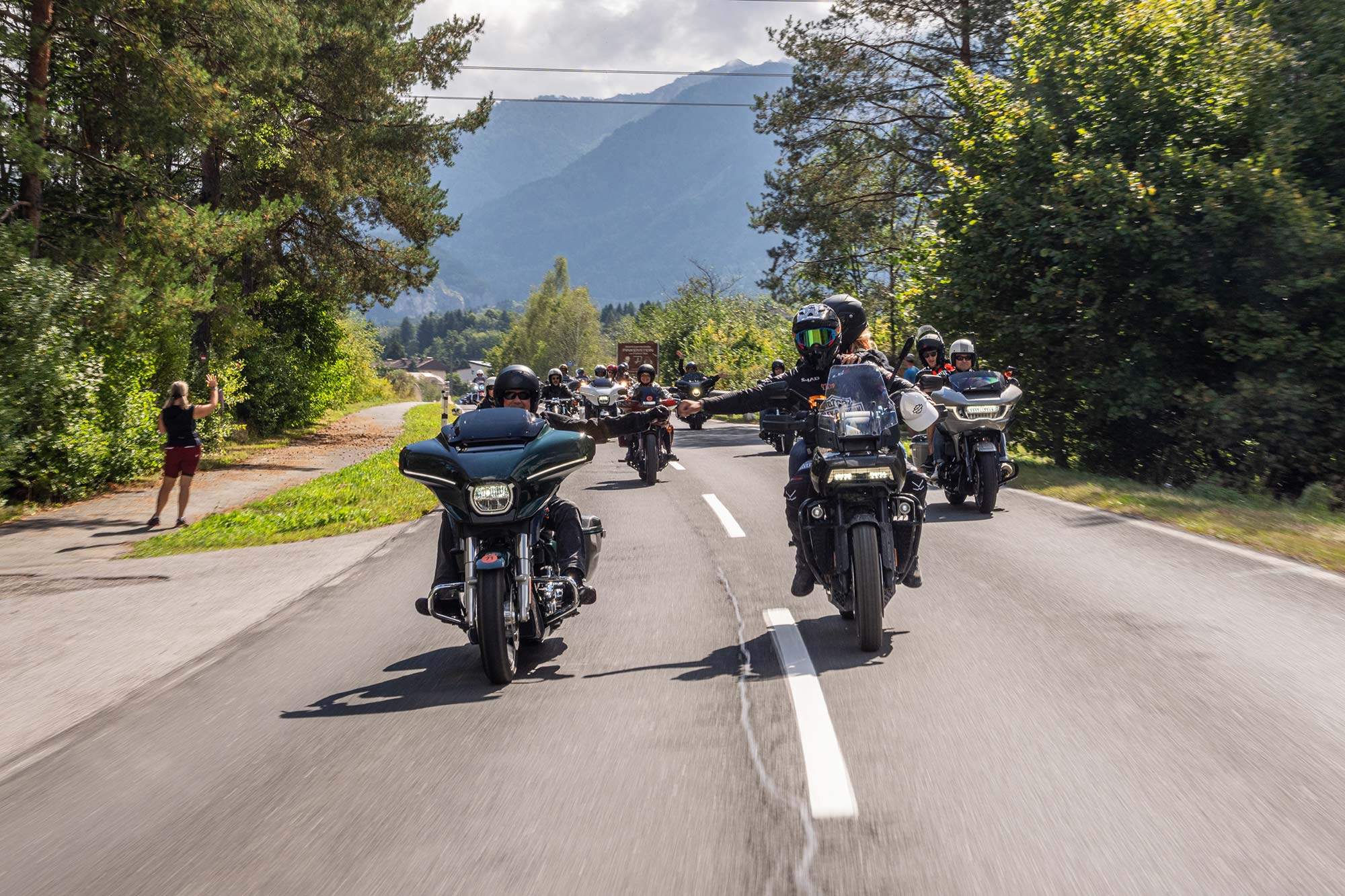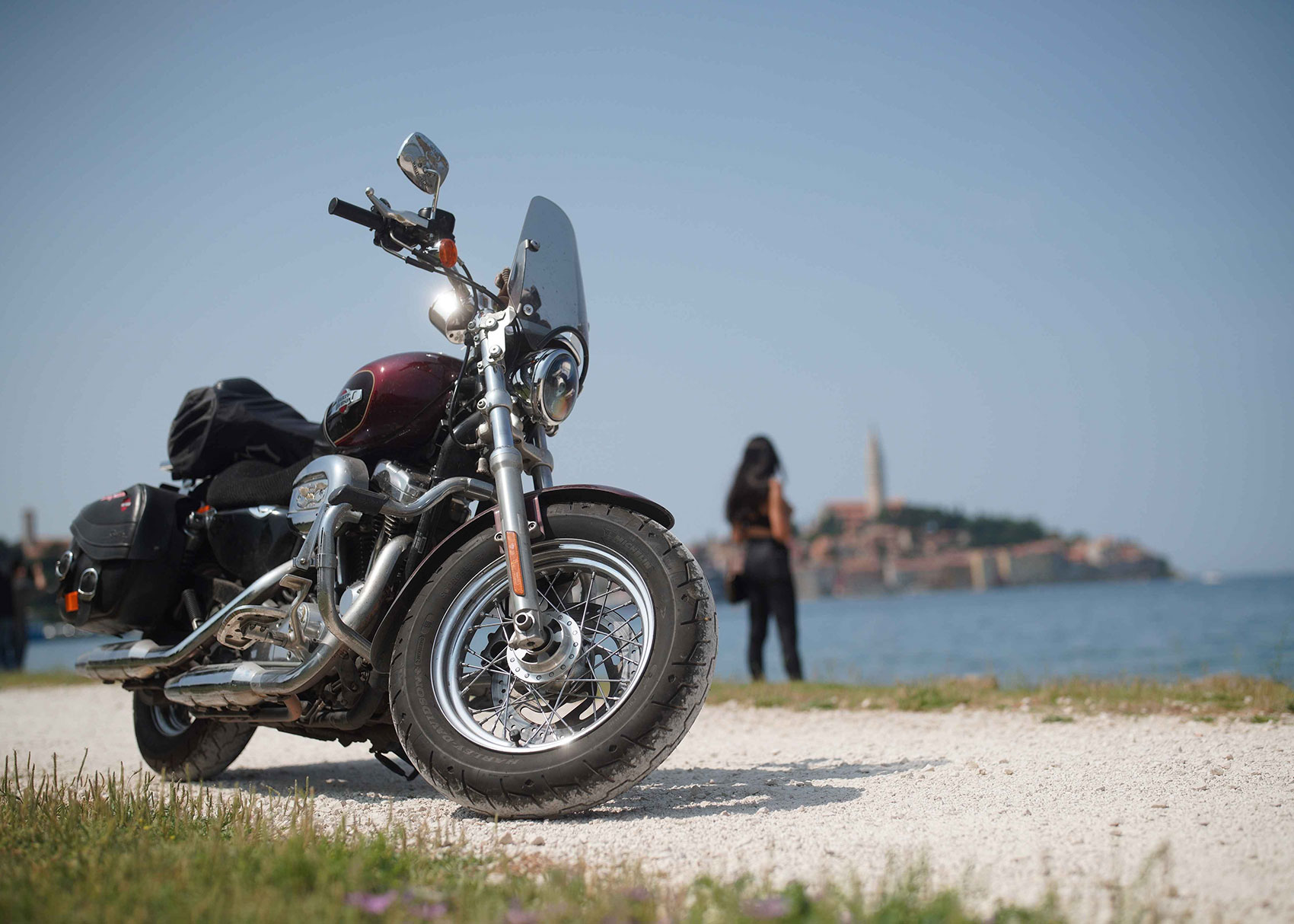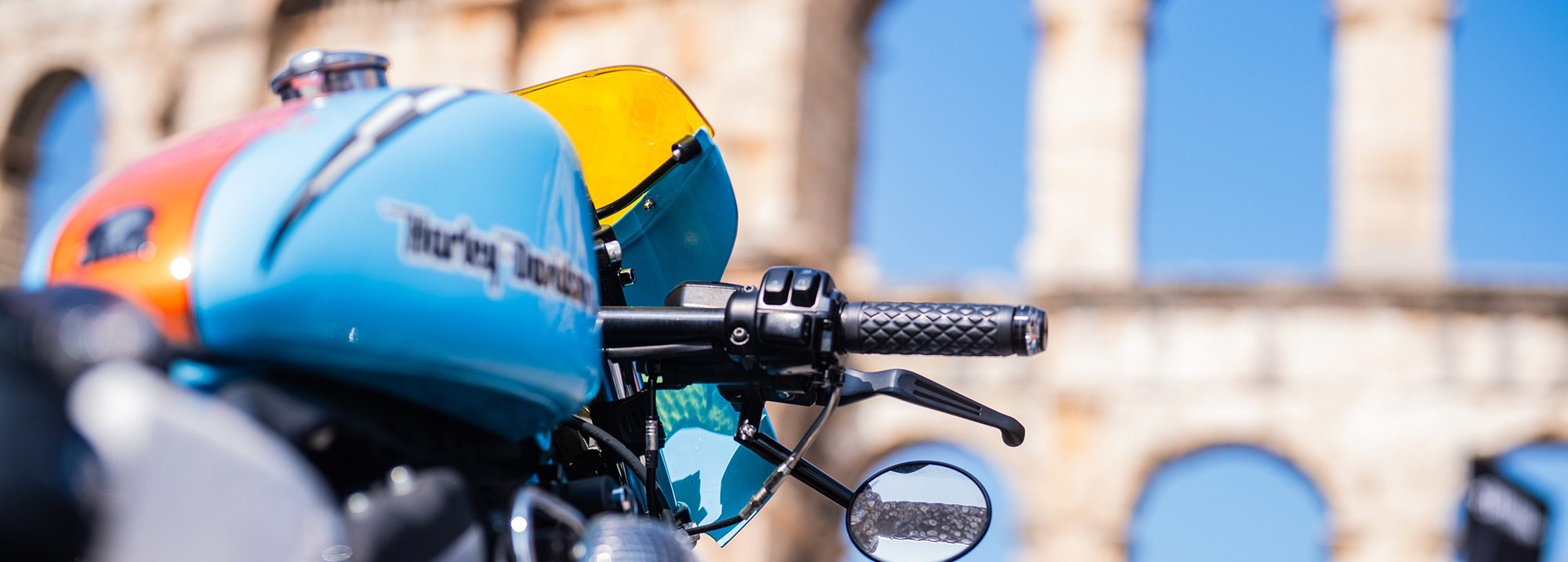
Lost in Navigation
Ray Petry discusses the pros and cons of using a GPS while riding and where your priorities should lie
Story by John Sandberg
To its critics, GPS navigation is a distraction, eliminates the elemental joy of riding a motorcycle and has spawned a generation of idiots who might know where they’re going but have no clue where they are. It’s emblematic of all that’s wrong in our modern technology-riddled world. To its defenders, GPS navigation provides directional certainty, greater safety and an overall more enjoyable motorcycling experience. It has solved far more problems than it has created.
Disruptive technology
In the period since portable GPS units began providing global positioning for civilian use, human navigation has transformed. Most say this transformation is for the better, but others aren’t so sure. Mostly gone are foldout maps and tired old jokes about men refusing to ask for directions at fuel stops. With the ubiquity of smartphones and infotainment systems, we now know the fastest route to grandma’s house, the closest restaurant and exactly how many minutes until we arrive home.
But with the good also comes the bad. Those one or two seconds when we glance at the screen to check our position might be the exact moment that a deer crosses in front of you, another motorist brakes, or a huge chunk of debris reveals itself on the road ahead.
“The problem with GPS is the same as the problem with changing the radio station, reaching for a bottle of water, or any of the other potential distractions from fully focusing on riding,” says Ray Petry, operations and training lead at the Harley-Davidson™ Riding Academy and someone who used GPS navigation on his Road Glide® Special motorcycle. “We’re not really multitasking; we’re switching tasks. If we’re going to switch tasks (and let’s face it, most of us will switch tasks for a moment, like checking to see the distance until our next turn), then we need to do it as proficiently and safely as possible.”
Master the functionality before you ride
For Ray, motorcycling with GPS can be safe and enjoyable if used correctly. If there’s one point to be made about using any feature of a motorcycle, including navigation, it’s that we need to master it before using it while actually riding. That means practicing while parked.
“None of us should learn to use a navigation system while we’re riding,” says Ray. “Instead, sit on the bike while it’s parked, and work with it until you’ve become an expert with its functionality and control. Only start using it on the road after it’s become second nature.”
For Ray, this is no different than the elemental aspects of motorcycle operation. “When we’re learning to ride, shifting gears takes a lot of concentration, to the point that riders aren’t paying adequate attention to the road ahead,” he says. “Changing lanes is another. These tasks are clunky until we’ve mastered them. When I instruct new riders, we’ll practice lane changes until it goes from clunky – where they have to really focus on the task – to being more automated. It’s the same with shifting gear. After enough practice, it becomes automatic. The same should be true for your motorcycle’s navigation and sound systems.”
In short, be master of these tasks, rather than letting them be master of you.
Pay attention and prioritise riding tasks
Safely riding a motorcycle requires us to pay attention to our riding environment, including the road, motorists, pedestrians, animals and any potential hazards. Yet safe riding isn’t just paying attention – it’s prioritising what we pay attention to. According to Ray, this is how we should prioritize our attention when riding:
1. Other road users, road signs, and signals.
2. What the road tells you, including surface conditions (holes, sand, cracks, debris) and watching out for traps (such as lane endings).
3. Knowing your escape route.
Notice that “Looking at my GPS to see how many miles until my destination” isn’t among the top three and for good reason, according to Ray: “In my opinion, we shouldn’t remove our attention from riding for longer than a half-second, otherwise we’re violating our attention priorities.”
But what should you do if you need to spend a couple of seconds looking at your GPS? “Get off the road completely,” he says. “Not just pulling over onto the shoulder. Go to a parking lot or a residential street where you can be completely stationary and away from busy traffic. Spend the time you need to recalibrate yourself or the interaction with your GPS before getting back on the road.”
Pre-program routes, use audio
As a user of GPS navigation on his Road Glide Special model, Ray has firsthand experience with the technology. His experience has taught him key lessons for safely using his navigation system.
“First, avoid diverting too much attention to the GPS while in motion,” he says. “If it requires more than a simple glance or toggle-switch command, save it for when you’re at a stop, or stop to adjust. And always program your destination into the unit before you’re in motion.
“Second, whenever possible use the system’s audio technology to transmit the audible directions either through your bike’s sound system or headset speakers.
“And third, GPS is simply a navigation aid. Don’t hesitate to ignore an instruction if a situation ahead takes priority. In other words, don’t turn right if there is no right.”
For Ray, receiving audible directions is less distracting than following a route on a screen, thus allowing him to maintain his attention priorities noted previously. Harley-Davidson offers multiple navigation products, from the infotainment systems on select motorcycles to standalone GPS units that can pair with Bluetooth-enabled headsets and speakers. Your local Harley-Davidson dealer can help to explain all of the options.
The end of the world as we know it?
For those who believe that GPS navigation is proof of the end of the world as we know it – and that such technology is unsafe – it’s important to accept that the “good old days” might not be as safe as we remember. Ray certainly recalls: “Before GPS, I’d create a route direction list that I’d write on tape or paper, and affix to my bike’s windshield or tank. Reading that list took more concentration away from riding than looking at a GPS screen or hearing audible directions.”
He also remembers missing turns and making last-second manoeuvres to correct them. Conversely, with GPS when you miss a turn or modify your route it automatically re-routes you. “With GPS, you’re never lost,” he says. “Yes, you can miss a turn or make a wrong one, but there’s no need to panic because the system will re-route you. So there’s no need to make an unsafe last-second manoeuvre just to stay on route.”
Has the near-universal reliance on GPS navigation ruined our sense of place in the world, as well as diminished our own internal navigational skills? Maybe. No doubt it’s still useful to utilise paper maps (printed or online) when preparing a trip to see a route in the context of something larger than the road you’re on. You’ll create a mental snapshot of the map, which will be useful and enjoyable while you’re riding.
Get lost and take the long way home
Ask yourself what you love about motorcycling. If the answers include freedom and adventure and discovery, then do yourself a favour and unplug from technology while you’re riding whenever it suits you.
“GPS route suggestions usually default to providing the fastest route rather than the most interesting one,” says Ray. There are new discoveries to be made simply by taking the long way and some of our most memorable riding experiences occur when we get lost. So, occasionally get lost and take the road less travelled.
Tags:
Read more tales from the Harley Owners Group!
Croatian Sunshine
The 31st European H.O.G. Rally returned to celebrate under blue skies in Medulin from 12-15 June 2025
In the pink
Creative imaginations were let loose on a spectrum of Harley models, with the top entries showcased along the marina


